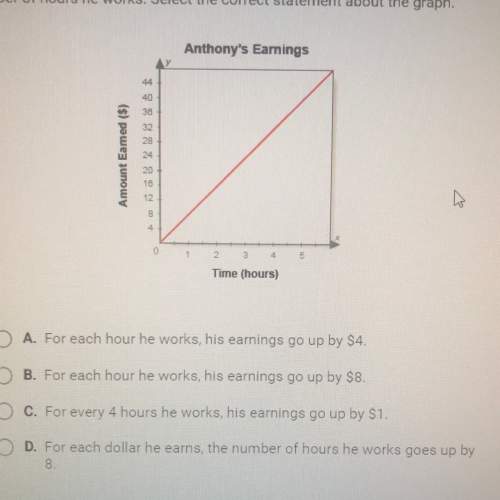
Mathematics, 28.04.2021 17:00 homer57idkiminatest
Luis uses cubes to represent each term of a pattern based on a recursive function. The recursive function defined is f(n + 1) = f(n) + 4, where n is an integer and n ≥ 2. The number of cubes used in each of the first two figures is shown below. How many cubes does Luis use in the third, fourth, and fifth figures of the pattern? Fill in the blanks.
Figure 1: 9 cubes
Figure 2: 13 cubes
Figure 3:
Figure 4:
Figure 5:

Answers: 2
Another question on Mathematics

Mathematics, 21.06.2019 19:00
Sanya noticed that the temperature was falling at a steady rate of 1.4 degrees every hour from the time that she first checked her outdoor thermometer. by 6 a.m., the temperature had fallen 21 degrees. which expression can you use to find how many hours earlier she had first checked the thermometer?
Answers: 3

Mathematics, 21.06.2019 19:00
Moira has a canvas that is 8 inches by 10 inches. she wants to paint a line diagonally from the top left corner to the bottom right corner. approximately how long will the diagonal line be?
Answers: 1

Mathematics, 22.06.2019 02:00
Study published in the journal of personality and individual differences found that adults with adhd displayed more creative achievement than those who didn't have the disorder. "for the same reason that adhd might create problems, like distraction, it can also allow an openness to new ideas," says holly white, assistant professor of cognitive psychology. "not being completely focused on a task lets the mind make associations that might not have happened otherwise." white and priti shah at the university of michigan gave 60 college students – half of them with adhd – a series of tests measuring creativity across 10 domains. the adhd group scored higher across the board. the adhd group showed more of a preference for brainstorming and generating ideas than the non-adhd group, which preferred refining and clarifying ideas. the adhd status of the participants was established by asking whether the individual had ever been clinically diagnosed with adhd/add. the tests of creativity were pencil-and-paper tasks administered in a laboratory setting. each of the ten scales was comprised of multiple questions, the scores on which were summed (e.g., writing creativity: "how many words can you make from the letters in the word 'psychology' invention creativity: "write down as many uses for a paper clip that you can think of.") this procedure does allow for a participant to be scored as showing no creativity under these conditions. a) state the research question in plain language (i wonder if is related to (1 point) b) state the null hypothesis (1 point) c) state the research hypothesis (1 point) d) is the research hypothesis directional or non-directional (1 point) e) name the predictor / independent variable f) give the operational definition of the predictor / independent variable g) evaluate the construct validity of the predictor / independent variable. (face, procedure, method-match) h) name the outcome / dependent variable i) give the operational definition of the outcome / dependent variable. j) evaluate the construct validity of the outcome / dependent variable. (face, procedure, method-match)
Answers: 1

You know the right answer?
Luis uses cubes to represent each term of a pattern based on a recursive function. The recursive fun...
Questions

Mathematics, 13.12.2020 01:20

Mathematics, 13.12.2020 01:20

Mathematics, 13.12.2020 01:20


Health, 13.12.2020 01:20


Computers and Technology, 13.12.2020 01:20



English, 13.12.2020 01:20

English, 13.12.2020 01:20


Social Studies, 13.12.2020 01:20

Spanish, 13.12.2020 01:20


Mathematics, 13.12.2020 01:20

Mathematics, 13.12.2020 01:20

Mathematics, 13.12.2020 01:20


Mathematics, 13.12.2020 01:20




